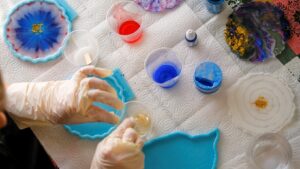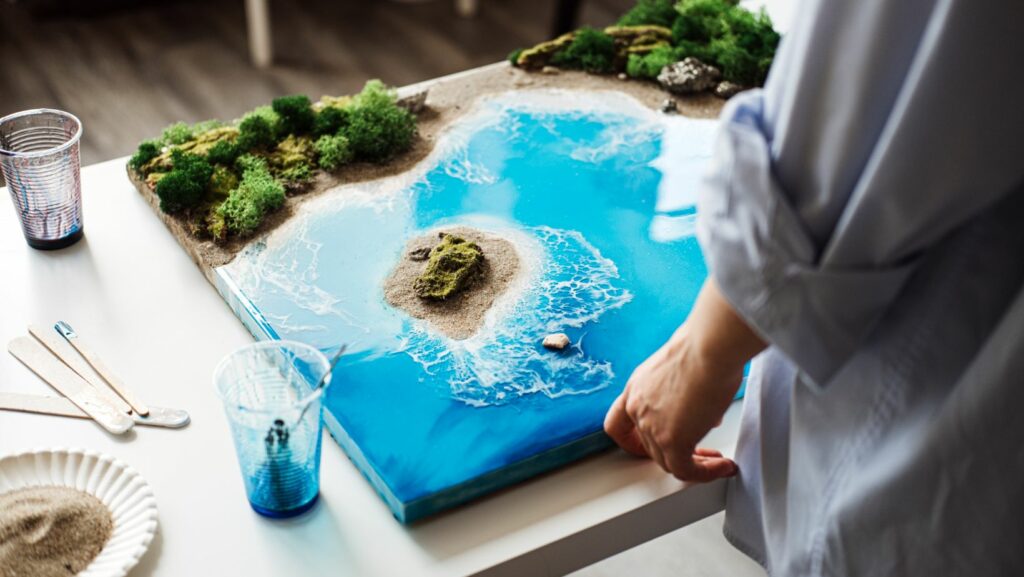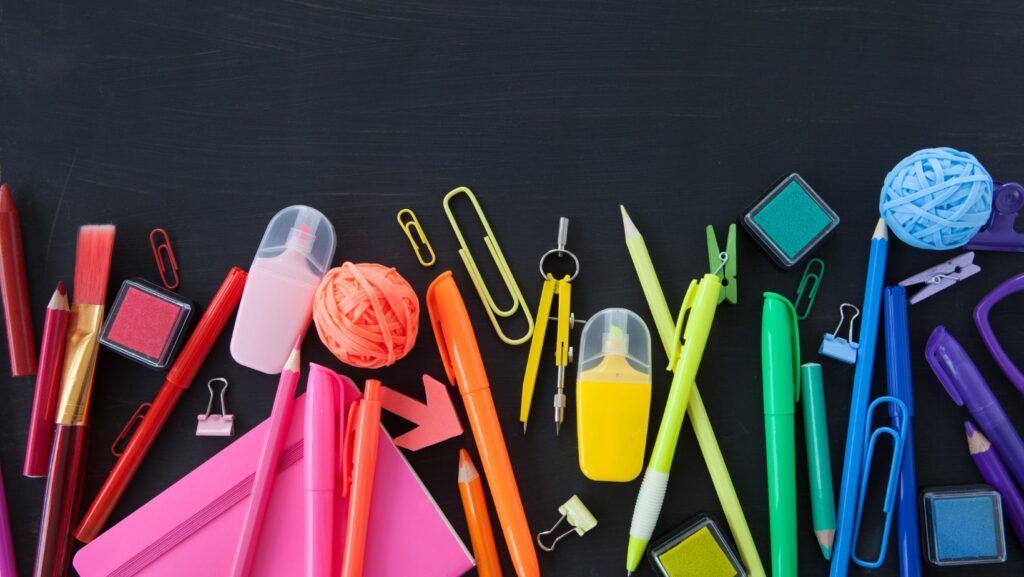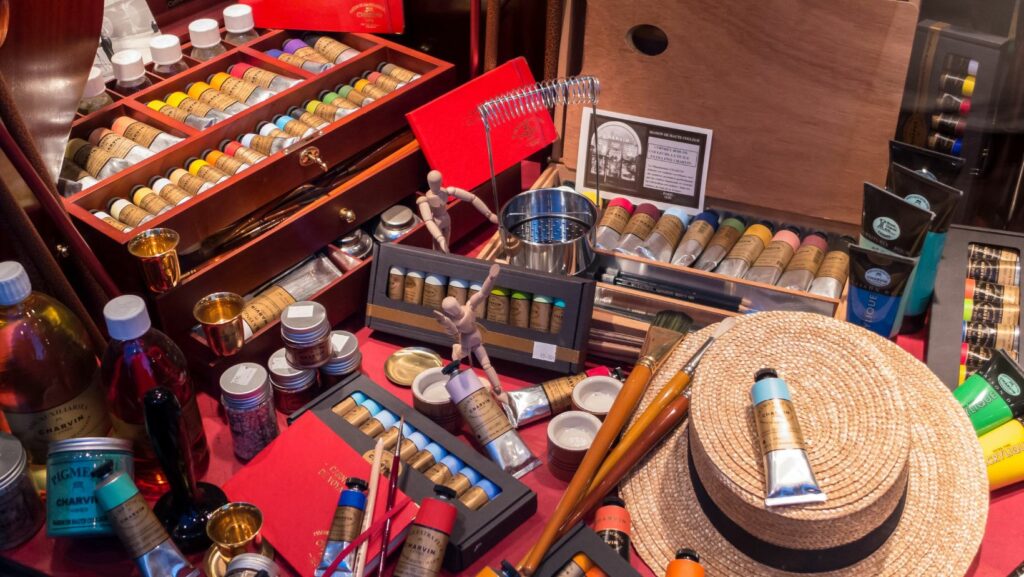Resin Art Supplies
- Essential Supplies: Understanding key resin art supplies, including resin types, molds, pigments, and mixing tools, is crucial for producing high-quality artwork.
- Resin Types: Epoxy and UV resins are popular choices; epoxy offers clarity and durability, while UV resin allows for quick curing and intricate designs.
- Tools Matter: Having the right mixing and casting tools, like measuring cups, stir sticks, and silicone molds, significantly impacts the final quality of resin projects.

- Creative Techniques: Mastering techniques like layering, embedding, and color mixing enhances the visual results and uniqueness of each resin piece.
- Safety First: Wearing personal protective equipment and ensuring proper ventilation are essential to minimize risks associated with resin materials.
Resin art has taken the creative world by storm, captivating artists and hobbyists alike with its mesmerizing depth and vibrant colors. As this unique medium continues to gain popularity, understanding the essential resin art supplies becomes crucial for anyone looking to dive into this exciting craft. From beginners to seasoned pros, having the right tools can make all the difference in achieving stunning results.
Whether it’s creating intricate coasters, eye-catching jewelry, or breathtaking wall art, the quality of resin and accompanying materials can elevate a project from ordinary to extraordinary. Exploring the various types of resins, molds, pigments, and safety gear empowers artists to unleash their creativity and express their unique vision. With the right supplies on hand, anyone can transform their ideas into beautiful, tangible works of art.
Overview of Resin Art Supplies
Resin art supplies consist of various essential materials needed for creating stunning resin artworks. Knowing these supplies enhances the ability to produce high-quality pieces. Key supplies include:
- Resin Types: Epoxy resin is commonly used. It provides clarity and durability, making it ideal for casting and coating projects. Polyurethane resin offers quick curing times, suitable for beginners or those with tight schedules.
- Molds: Silicone molds are versatile and reusable. They come in various shapes and sizes, perfect for crafting coasters, trays, and decorative items.
- Pigments: Color pigments, including liquid and powder forms, allow artists to achieve desired hues. Metallic and iridescent pigments add a unique shimmer, enhancing the visual appeal of the final piece.
- Mixing Tools: Measuring cups and stir sticks are necessary for precise mixing of resin components. Using a blow torch or heat gun eliminates air bubbles during the curing process, ensuring a smooth finish.
- Safety Gear: Personal protective equipment, such as gloves, masks, and goggles, is vital. These items protect against chemical exposure and potential irritations from fumes produced during resin mixing.
Understanding and acquiring these resin art supplies enables artists to explore their creativity fully and produce impressive projects efficiently.
Types of Resin Art Supplies
Various resin types exist for different art projects, each offering unique characteristics and advantages. Understanding these options ensures optimal results in resin art creations.
Epoxy Resin
Epoxy resin serves as the most popular choice for resin art due to its high transparency, durability, and strong adhesive properties. Artists use it for projects like coasters, table coverings, and jewelry making. The curing time typically ranges from 24 to 72 hours, allowing for flexibility in working with mixed materials. When mixed correctly, epoxy resin provides a glossy finish that enhances colors and details within the piece.
UV Resin
UV resin cures quickly under ultraviolet light, making it ideal for small and intricate projects. Artists appreciate its fast setting time, often within minutes, which allows for multiple layers in a single session. UV resin is commonly used for jewelry, decorative pieces, and repairs. However, it requires proper UV light equipment and may lack the same depth as epoxy resin for larger applications.
Other Resin Types
Other resin types include polyurethane and polyester resins, each with specific applications.
- Polyurethane Resin: Known for its flexibility and impact resistance, polyurethane resin suits outdoor projects and items exposed to wear. It is often used in casting, mold-making, and coatings.
- Polyester Resin: Typically budget-friendly, polyester resin works well for larger castings and is favored in boat building and art pieces. It has a shorter curing time but emits strong fumes, requiring adequate ventilation.
Understanding the various resin types enables artists to select the most appropriate materials for their projects, ensuring quality and longevity in their art.
Essential Tools for Resin Art
Having the right tools significantly impacts the quality of resin art projects. The following categories outline the essential tools necessary for successful applications.
Mixing Tools
Mixing tools include measuring cups, stir sticks, and a scale for accuracy.
- Measuring Cups: Use silicone or plastic measuring cups for easy pouring and cleanup. Graduated cups with clear markings assist in measuring resin and hardener ratios, ensuring precise mixtures.
- Stir Sticks: Choose wooden or disposable stir sticks for effective blending. These tools help achieve a uniform mixture by properly combining resin and hardener, which is crucial for optimal curing.
- Digital Scale: A digital scale provides accurate measurements of resin components, particularly for larger projects where precision is essential.
Molds and Casting Items
Molds and casting items shape the final product and come in various types.
- Silicone Molds: Flexible silicone molds are reusable and easy to demold, making them suitable for various applications, from coasters to jewelry.
- Geode Molds: Specially designed for creating artistic geode-like shapes, these molds produce unique designs that enhance the visual appeal of resin projects.
- Casting Containers: Use plastic or silicone containers for larger resin pours. These containers allow for bulk pouring, ideal for big projects that require substantial amounts of resin.
These tools, when utilized effectively, enhance the artist’s ability to work with resin, leading to professional-quality results.
Techniques for Working with Resin
Resin art encompasses various techniques that enhance creativity and result in stunning pieces. Mastering these techniques allows artists to achieve remarkable effects in their projects.
Layering and Embedding
 Layering involves pouring multiple resin layers, each cured before adding the next. This technique creates depth and dimension within the artwork. Artists often use different colors or additives for each layer to achieve unique looks.
Layering involves pouring multiple resin layers, each cured before adding the next. This technique creates depth and dimension within the artwork. Artists often use different colors or additives for each layer to achieve unique looks.
Embedding, on the other hand, lets artists incorporate objects, like flowers or beads, into resin layers. Preparing objects properly ensures that they adhere well to the resin. For instance, sealing porous items prevents bubbles and discoloration. Artists should also consider the weight of embedded items to ensure proper resin coverage and balance within the artwork.
Color Mixing Methods
Color mixing plays a crucial role in resin art, allowing artists to create custom shades and effects. Two common methods include using pigments and dyes.
Pigments, like mica powder or liquid pigments, provide vibrant colors and shimmer. Artists should mix pigments thoroughly before adding them to resin for an even distribution. Dyes, often transparent, enable artists to create translucent effects. Mixing dye in small quantities ensures control over the final hue.
Blending techniques, such as swirling or marbling, create unique patterns. Artists can experiment with ratios and mixing speeds to achieve desired effects. Testing on sample pieces helps fine-tune mixing methods to attain optimal results in final projects.
Safety Precautions
Safety is paramount when working with resin art supplies. Proper precautions reduce the risk of exposure to potentially harmful chemicals and ensure a safer creative environment.
Personal Protective Equipment
Personal protective equipment (PPE) includes essential items that shield the artist from chemical exposure. Key PPE items consist of:
- Gloves: Use nitrile gloves for protection against resin and harmful irritants.
- Face Masks: Wear masks rated for organic vapors to prevent inhalation of fumes from resin and hardeners.
- Safety Goggles: Protect eyes from splashes and irritants by wearing safety goggles.
- Aprons or Protective Clothing: Use aprons that cover skin to avoid direct contact with resin and pigments.
Donning appropriate PPE before starting any resin project prevents skin contact and minimizes inhalation risks.
Ventilation Tips
Proper ventilation facilitates the safe use of resin by dispersing harmful fumes. Recommended ventilation practices include:
- Working Outdoors: Whenever possible, set up projects outside to benefit from fresh air circulation.
- Using Fume Extraction Fans: Employ fume extraction systems or fans to direct vapors away from the work area.
- Opening Windows: If working indoors, keep windows wide open to allow airflow throughout the space.
- Utilizing Air Purifiers: Incorporate air purifiers with activated charcoal filters to capture airborne pollutants effectively.
Implementing effective ventilation measures during resin mixing and curing ensures a safer environment.
Rewarding and Inspiring
Resin art opens up a world of creative possibilities for artists and hobbyists alike. By selecting the right supplies and understanding their unique properties, creators can elevate their projects to new heights. Safety should always be a priority, ensuring a secure environment while working with these materials.
With the right tools and techniques, anyone can produce stunning pieces that reflect their individual style. As the resin art community continues to grow, embracing these essentials will empower artists to explore their creativity fully. Whether it’s through layering, embedding, or experimenting with colors, the journey into resin art is both rewarding and inspiring.



